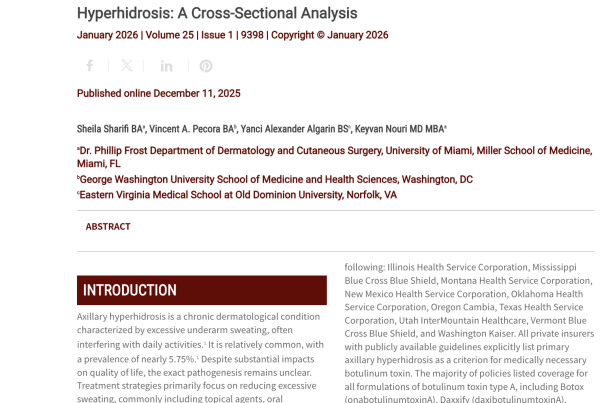Featured Article

In a paper recently published by JDD, several experts developed a guide based on their own experiences navigating the challenges of this past year.
In a paper recently published by JDD, several experts developed a guide based on their own experiences navigating the challenges of this past year.
The suddenness with which offices closed as the COVID-19 pandemic escalated created many questions for practices. The uncertainty and inconsistencies around staffing procedures and reopening protocols added to the anxiety and emphasized the need to have proactive strategies in place for emergency situations.
In a paper recently published by JDD, Aesthetic Office Disaster Preparedness and Response Plan, several experts developed a guide based on their own experiences navigating the challenges of this past year.
“This advisory guide is meant to provide aesthetic physicians and their staff with a practical approach for practice management, staffing, supplies and inventory, and patient management,” the authors write in their paper titled “Aesthetic Office Disaster Preparedness and Response Plan.” They add that the paper does not set a standard of practice, but rather offers recommendations for various office procedures to have in place before a disaster-related event.
The experts classified their recommendations into four general areas: Practice Management; Supplies and Inventory; Office Staffing Considerations and Protocols; and Patient Management Strategies.
Among their many recommendations, they suggest creating several lists to serve as references in the event of an emergency. These include:
- Site access lists — log-in information and passwords to social media sites and other web-based office accounts
- Contact lists — staff contact details; office insurance policy contacts; financial institutions; colleagues who can be reached for assistance or guidance; state and national agencies like the Centers for Disease Control and Prevention, Federal emergency Management Agency, Department of Public Health), Department of Labor, etc.
- Supply lists — office-related items in staff possession, inventory of general medical supplies including quantities and expiration dates
Additionally, the authors suggest pre-planning protocols for emergency staffing and office-hours as well as methods for communicating these to both staff and patients at the onset of a disaster.
“In situations of office closure or limited patient accessibility, the staff should be prepared to quickly switch to virtual access patient management tools such as telemedicine appointments,” the authors write.
Among their many additional suggestions, the authors offer insight into financial considerations, office medical record policies and procedures, how much to stock of various emergency supplies and more.
“We are hopeful that this provides at least a template of items for consideration and implementation across the various practice situations and emergencies and mitigates the reoccurrence of difficult lessons learned from the COVID-19 pandemic,” they write.
Aesthetic Office Disaster Preparedness and Response Plan
The coronavirus pandemic (COVID-19) has served as a call-to-arms in preparing practices for the next disaster whether it is another infectious disease or a flood, hurricane, earthquake, a sustained power outage, or something else. A group of predominantly core aesthetic physicians discussed the various aspects of their office procedures that warrant consideration in a proactive approach to the next pandemic/disaster-related event. This guide does not set a standard of practice but contains recommendations that may avoid some of the “lessons learned” with the COVID-19 pandemic.
Read More
Get More from the JDD
Get the latest dermatology news delivered straight to your Inbox – sign up for the JDD Newsletter.
Discover the latest research, exclusive articles from leading dermatology experts, popular Podcast episodes, free CME activities, and more!
You May Also Like











